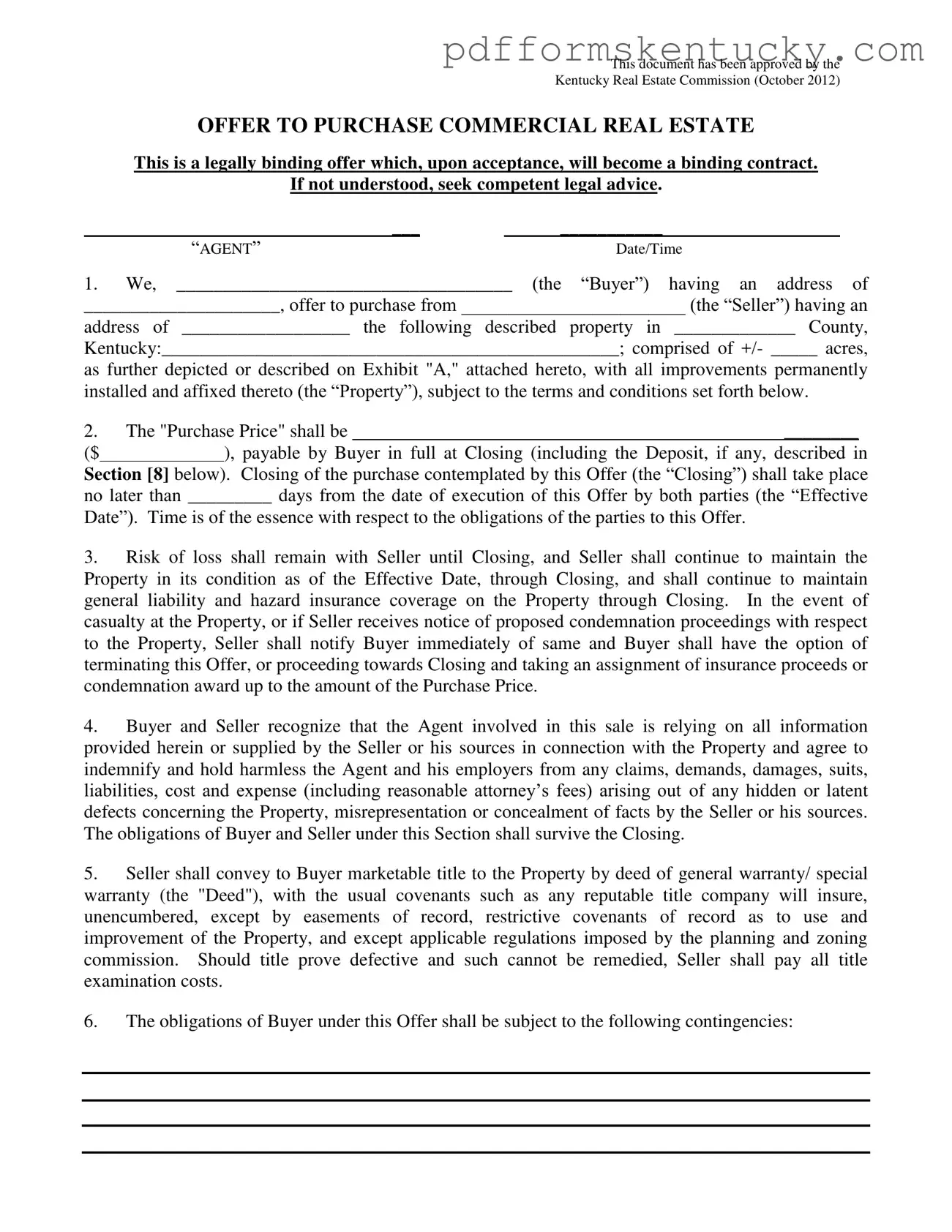What is the Home Sale Contract Kentucky form?
The Home Sale Contract Kentucky form is a legally binding document used when a buyer wants to purchase commercial real estate in Kentucky. It outlines the terms and conditions of the sale, including the purchase price, property details, and obligations of both the buyer and seller. Once accepted, it becomes a binding contract.
What should I include in the property description section?
You should provide a clear and detailed description of the property being sold. This includes the address, county, and any specific features or boundaries of the property. You may also refer to Exhibit "A," which can include a drawing or legal description to clarify what is being sold.
What is the Purchase Price and how is it paid?
The Purchase Price is the total amount the buyer agrees to pay for the property. This amount should be filled in on the form. The buyer is required to pay this amount in full at Closing, which is the final step in the sale process. If a deposit is made, it will be applied to the Purchase Price at Closing.
What happens if there is a problem with the property before Closing?
According to the contract, the seller is responsible for maintaining the property in its current condition until Closing. If there is any damage or if the property is involved in condemnation proceedings, the seller must inform the buyer immediately. The buyer then has the option to terminate the offer or proceed with the purchase, potentially receiving insurance proceeds.
What are contingencies in the Home Sale Contract?
Contingencies are conditions that must be met for the contract to proceed. The buyer's obligations under the contract may depend on certain factors, such as securing financing or completing inspections. These contingencies protect the buyer and ensure that they can withdraw from the contract if specific conditions are not satisfied.
What is the role of the Agent in this contract?
The Agent facilitates the sale and represents the seller's interests. The contract states that the buyer and seller agree to indemnify the Agent from any claims related to hidden defects or misrepresentation of the property. It's important to understand that the Agent's role is primarily to assist the seller, so buyers should do their own due diligence.
What happens if either party does not fulfill their obligations?
If either the buyer or seller fails to meet their obligations, the contract outlines remedies for the non-defaulting party. This may include the buyer losing their deposit as liquidated damages if they fail to perform. Conversely, if the seller does not fulfill their obligations, the buyer can pursue legal remedies to enforce the contract.
